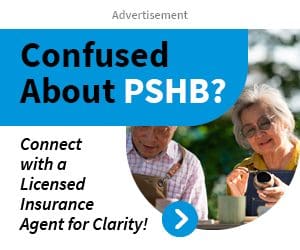Key Takeaways:
- Postal workers must review and update their family health coverage under the new Postal Service Health Benefits (PSHB) program during the 2024 open enrollment to ensure continued protection for dependents.
- Double-checking eligibility and understanding Medicare coordination is crucial for retirees, especially those with dependents, to avoid coverage gaps.
Why Postal Workers Should Double-Check Their Family Coverage Under PSHB This Year
As 2024 unfolds, postal employees and retirees are facing a significant transition in their health coverage. With the launch of the Postal Service Health Benefits (PSHB) program scheduled for January 1, 2025, all postal workers and annuitants currently enrolled in Federal Employees Health Benefits (FEHB) plans must make the shift to PSHB. While the core structure of the new program mirrors the FEHB, there are some critical differences that could impact the coverage of postal workers and their families. Ensuring your dependents are fully protected is a top priority, and that’s why postal workers should double-check their family coverage under PSHB during this crucial year.
What’s Changing Under PSHB?
The PSHB program, established under the Postal Service Reform Act of 2022, is designed specifically for Postal Service employees, retirees, and their eligible dependents. While the new system will still offer plans similar to those under FEHB, the separation creates a postal-only risk pool. This change is expected to result in some differences in plan offerings and costs.
More importantly, as FEHB plans will no longer cover postal workers after 2024, all eligible employees and annuitants must transition to a PSHB plan during the 2024 open enrollment period. This shift will require you to review your current coverage and verify that your family members, including spouses and dependents, remain fully covered under the new system.
Eligibility and Coverage for Dependents
Under PSHB, the eligibility criteria for dependents are similar to those of FEHB but with specific considerations for postal employees. Dependents eligible for coverage include:
- Spouses: Legally married spouses are eligible for PSHB coverage.
- Children: Children under the age of 26, including biological, adopted, stepchildren, and foster children who meet certain criteria.
- Disabled Adult Children: Children over the age of 26 who are incapable of self-support due to a disability that began before age 26 may also be eligible for continued coverage.
While these criteria have not drastically changed, it is crucial to verify that all dependents remain eligible under PSHB. Failure to update dependent information during the open enrollment period could lead to lapses in coverage, leaving family members without health insurance.
The 2024 Open Enrollment: Key Steps for Postal Workers
The first open enrollment period for the PSHB program will take place from November 11 to December 9, 2024. During this time, postal workers must select a new health plan under PSHB. Employees who do not actively choose a plan will be automatically enrolled in a default option based on their current FEHB plan. However, it’s important to note that this automatic enrollment may not always be the best fit for your family’s health needs.
To avoid any surprises, here are the key steps postal workers should take:
-
Review Plan Options: Take the time to compare the various PSHB plans available. Consider your family’s health care needs, including any specialized services required by dependents, such as pediatric care, mental health support, or ongoing treatment for chronic conditions.
-
Check Dependent Eligibility: Ensure that all dependents are correctly listed and meet the eligibility requirements for coverage under PSHB. Gather necessary documents, such as marriage certificates, birth certificates, or disability certifications, to confirm eligibility.
-
Consider Medicare Coordination for Retirees: If you or a dependent is eligible for Medicare, understanding how PSHB integrates with Medicare is crucial. Starting in 2025, retirees must enroll in Medicare Part B to maintain their PSHB coverage. This coordination will help reduce out-of-pocket costs, but you need to ensure that your family’s transition is smooth.
-
Submit Enrollment Early: Avoid waiting until the last minute to enroll. Submitting your information early allows time to address any potential issues and ensures continuous coverage for your family members.
Special Considerations for Retirees and Medicare
For retirees, the transition to PSHB introduces additional considerations, especially regarding Medicare. Retirees who become eligible for Medicare in 2025 and beyond will be required to enroll in both Medicare Part A and Part B. This rule is designed to coordinate Medicare benefits with PSHB, making Medicare the primary payer and PSHB the secondary payer.
If you or a dependent is already enrolled in Medicare, this transition may seem straightforward. However, retirees who have not previously enrolled in Medicare Part B may face new enrollment requirements, and failure to sign up could result in coverage gaps for both the retiree and their dependents.
Avoiding Common Mistakes During Enrollment
The transition to PSHB presents several opportunities for missteps, which could leave family members without adequate health coverage. To avoid these common mistakes, postal workers and retirees should focus on the following areas:
- Verify Dependent Information: Ensure that all dependents, including children and spouses, are correctly listed during the enrollment process. Double-check the documentation to avoid delays in processing.
- Understand Plan Coverage: Each plan may offer different levels of coverage, including network restrictions and out-of-pocket costs. It’s essential to select a plan that meets your family’s specific needs.
- Watch for Medicare Coordination: Retirees and their dependents must ensure that PSHB and Medicare coverage is aligned to avoid any interruptions in care.
By being proactive and reviewing your family’s coverage during the 2024 open enrollment period, you can avoid these pitfalls and ensure that your loved ones remain fully protected under PSHB.
Financial Considerations: Preparing for Changes
While specific plan costs are not available yet, it’s important to anticipate potential changes in premiums, co-pays, and out-of-pocket expenses as you transition from FEHB to PSHB. The creation of a postal-only risk pool could lead to fluctuations in plan costs, especially for families with high medical needs.
Review the details of each available plan carefully to understand the potential financial impact on your family. While PSHB is designed to offer similar benefits to FEHB, certain factors—such as family size, specific health needs, and the type of plan selected—can affect overall costs.
Planning for the Future: Ensuring Continued Protection
The introduction of the PSHB program marks a significant shift in health coverage for postal workers and retirees. While this transition may seem complex, the steps you take during the 2024 open enrollment period will play a crucial role in ensuring your family remains fully protected.
Stay informed by attending informational sessions, reviewing plan materials, and consulting with a licensed insurance agent if necessary. These resources will help you make the best decisions for your family’s health care needs and financial situation.
Securing Family Coverage in 2025 and Beyond
As postal workers and retirees prepare for the transition to the PSHB program, it’s more important than ever to double-check family health coverage. By reviewing plan options, confirming dependent eligibility, and ensuring Medicare coordination for retirees, you can protect your loved ones and avoid coverage gaps during this critical time.











